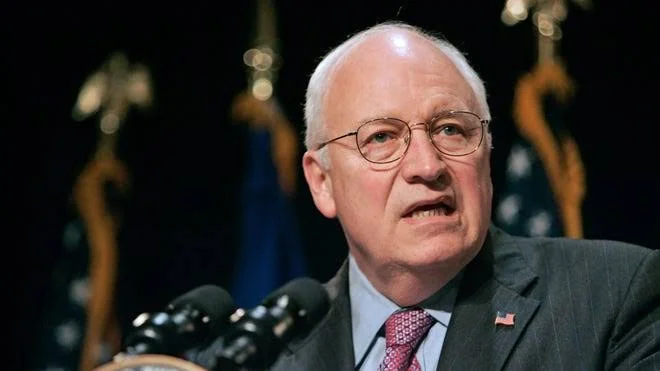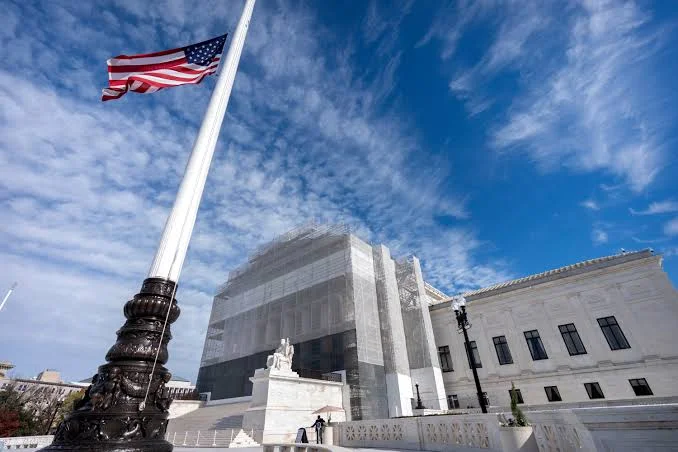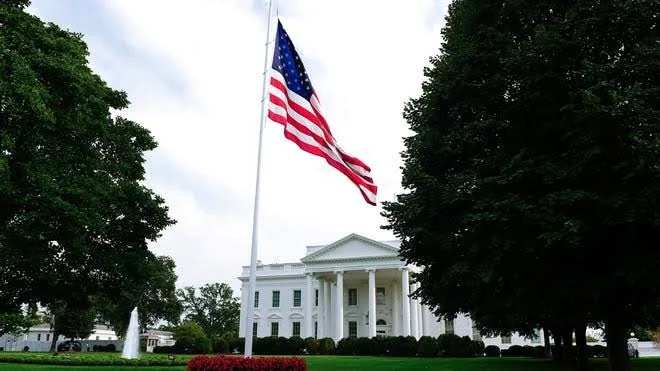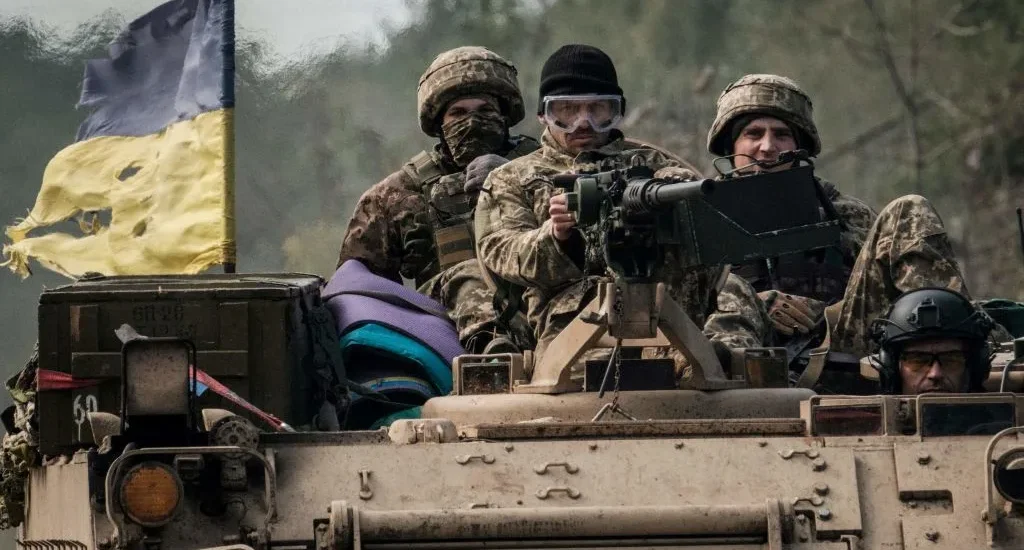
Why Are Flags at Half-Staff Today? November 2025 Guide
From Dick Cheney's passing to state-level tributes, America pauses to honor service and sacrifice across the nation
November 8, 2025
You've probably seen it. The American flag, normally standing tall and proud, hanging lower than usual—positioned halfway down the pole in a gesture that stops people mid-stride. It's a visual language we all recognize, even if we don't immediately know the reason behind it.
So why are flags at half-staff today? The answer carries weight. Flags across the United States remain lowered following the death of former Vice President Dick Cheney, who passed away on Monday, November 3, 2025, at age 84. According to Title 4, Section 7 of the U.S. Flag Code, flags must fly at half-staff from the day of a former vice president's death until their interment—scheduled for November 20, 2025.

But Cheney's passing isn't the only reason flags hang lower this November. Individual states have issued their own proclamations, honoring fallen police officers, deceased legislators, and military veterans whose remains have finally come home. Each lowered flag tells a story—of service, sacrifice, and the complex ways we choose to remember.
The Cheney Observance: What Federal Law Requires
Dick Cheney's death triggered an automatic protocol embedded in federal statute. The U.S. Flag Code mandates that flags be flown at half-staff for former vice presidents from the day of death until interment—no presidential proclamation technically required, though one is expected.
Around midday on Tuesday, November 4, the White House confirmed that flags had been lowered in accordance with statutory law. Press Secretary Karoline Leavitt clarified that while President Trump had not yet issued a formal proclamation, the flags came down automatically as federal code demands. The observance will continue through Cheney's burial on November 20.
It's a gesture that transcends politics—at least in theory. Whether Americans admired Cheney's unwavering commitment to national security or opposed his role in controversial wartime decisions, the lowered flag asks everyone to pause. To acknowledge. To remember that leadership carries consequences that outlive those who wield it.
"The death of a former Vice President is covered by 4 U.S. Code § 7, which is part of the US Flag Code. According to this section, the flag is to be flown at half-staff from the day of death until interment."
— HalfStaff.org, official flag protocol resource
Who Was Dick Cheney?
For those who came of age after 2009, Dick Cheney might be an unfamiliar name. For everyone else, he's impossible to forget. Serving as the 46th Vice President under George W. Bush from 2001 to 2009, Cheney became arguably the most powerful person to hold that office in modern American history—a distinction that brought both admiration and fierce criticism.
His political career spanned five decades. He served as Secretary of Defense during the 1991 Persian Gulf War, represented Wyoming in the U.S. House of Representatives for six terms, and worked as White House Chief of Staff under President Gerald Ford at just 34 years old—the youngest person ever to hold that position.
But it's his vice presidency that defined him. Cheney's tenure included the September 11 attacks, the wars in Afghanistan and Iraq, the authorization of enhanced interrogation techniques, and an expansion of executive power that alarmed constitutional scholars. His supporters credit him with steady leadership during national crises. His critics point to the Iraq War—launched on intelligence about weapons of mass destruction that proved unfounded—and interrogation policies they consider torture.
The debates about Cheney's legacy remain unresolved. Even in death, he divides opinion. The flag protocol doesn't resolve those divisions—it simply acknowledges that he was here, that he served, that his absence marks the end of an era in American politics.
Beyond Washington: State-Level Observances
While the nation honors Cheney, individual states are conducting their own rituals of remembrance. New Mexico Governor Michelle Lujan Grisham ordered flags lowered from November 8 through sunset November 11 to honor former Senator Clint Harden, who passed away October 18 after years of service representing eastern New Mexico.
Kentucky mourned Martha Layne Collins, the state's first and only woman governor, who died November 1 at 88. Her groundbreaking tenure in the 1980s paved the way for women in state politics nationwide. Minnesota lowered flags for police officer Pete Zajac, who died October 28 after more than 15 years serving the Farmington community.
These concurrent observances reveal something profound about the half-staff tradition. It's not reserved exclusively for national figures or military heroes. It honors service at every level—from small-town police officers to state legislators to vice presidents. The common thread isn't fame or power, but the act of stepping forward to serve the public, with all the scrutiny and sacrifice that entails.
This creates an interesting dynamic. A flag lowered in New Mexico might be honoring someone most Americans have never heard of. A flag in Kentucky pays tribute to a pioneering woman leader. Meanwhile, federal flags across all fifty states recognize a vice president whose policies sparked passionate debate. All share the same visual symbol, but the meanings layered beneath are distinctly different.

What Half-Staff Actually Means
The practice of lowering flags dates back centuries to naval tradition. Ships would lower their colors to make space for an "invisible flag of death"—a gesture that acknowledged loss while maintaining the vessel's ability to identify itself at sea. What began as maritime custom has evolved into one of the most universally recognized symbols of mourning and respect.
Today's protocol preserves that symbolism with specific requirements. When properly executed, the flag should first be hoisted briskly to the peak, then lowered solemnly to half-staff—positioned one flag width down from the top of the pole. Before day's end, it must again be raised to the peak before being retired for the night.
This choreography matters. It represents the idea that even in grief, we honor the heights of human achievement and aspiration. We acknowledge loss without surrendering to it. We remember the dead while affirming that life—and the nation—continues.
Americans aren't required to lower flags on private property, but many choose to do so out of respect or community solidarity. That voluntary participation transforms a government protocol into something more powerful—a grassroots expression of shared values that bridges ideological divides, at least momentarily.
The Annual Half-Staff Calendar
Beyond individual deaths and tragedies, certain dates on the calendar automatically trigger half-staff observances. These annual commemorations have become part of the national rhythm, woven into the fabric of American civic life:
- Peace Officers Memorial Day (May 15) — Honoring law enforcement officers killed in the line of duty, from sunrise to sunset
- Memorial Day (Last Monday in May) — Flags at half-staff only until noon, then raised to full height, symbolizing the nation's resilience
- Patriot Day (September 11) — Remembering the 2,977 lives lost in the 2001 terrorist attacks
- Korean War Veterans Armistice Day (July 27) — Recognizing the sacrifice of those who served in the forgotten war
- Pearl Harbor Remembrance Day (December 7) — Honoring the 2,400 service members killed in the 1941 attack
Each of these days tells a story about what America chooses to remember publicly. They're not just calendar entries but collective decisions about which sacrifices matter enough to pause and reflect upon as a nation. They create a shared vocabulary of grief, respect, and acknowledgment that transcends our daily partisan battles.
November 11, Veterans Day, offers an interesting contrast. On that day, flags fly at full-staff throughout—not as mourning but as celebration of all who have served in uniform. The distinction matters. Different occasions demand different forms of respect, and the flag protocol reflects that nuance with precision.
The Politics of Remembrance
Not everyone agrees that Cheney deserves this honor. Social media erupted with divided reactions following the announcement. Some praised his unwavering commitment to keeping America safe after 9/11. Others questioned whether someone associated with controversial wartime decisions merits such ceremonial respect.
"He was a war criminal," wrote critics online, referencing enhanced interrogation policies and the Iraq War. "He was a patriot who protected us," responded supporters, pointing to the absence of major terrorist attacks on American soil during most of his tenure.
This tension isn't new. Presidential and vice-presidential deaths have always sparked debates about legacy, memory, and how we honor leaders whose policies affected millions. The flag protocol sidesteps these arguments by establishing clear, non-negotiable guidelines based on position held rather than public approval ratings or historical judgments.
Perhaps that's the point. In a democracy where consensus is rare, the ritual of remembrance offers neutral ground. We can disagree profoundly about policies while acknowledging the burden of leadership. We can debate legacies while respecting the office and those who accept its weight.
It's similar to how we navigate other contentious moments in American life—whether it's election outcomes that divide the nation or cultural debates that seem impossible to resolve. The flag protocol provides a framework for collective acknowledgment even when collective agreement proves impossible.

How Long Will Flags Remain Lowered?
For Cheney, flags will stay at half-staff through his interment on November 20. The funeral arrangements haven't been fully disclosed, but expectations point toward a ceremony befitting his rank—likely attended by current and former officials from both political parties, along with military honors reflecting his service as Secretary of Defense.
State observances follow their own timelines. New Mexico's flags for Senator Harden will return to full-staff after sunset November 11. Kentucky's observance for Governor Collins has already concluded. Each state sets its own protocols for honoring local figures, creating a patchwork of remembrance that reflects America's federalist structure.
Once November 20 passes, federal flags will rise back to their full height. National attention will shift to the next crisis, controversy, or celebration—the perpetual cycle of news and governance grinding forward as it always does. But something will linger.
For nearly three weeks, Americans saw the same symbol in the same position, sharing a visual vocabulary that asked them to pause, to consider, to remember that public service—whatever its outcomes—carries weight and consequence. It's a reminder we need, perhaps now more than ever.
What If You Can't Lower Your Flag?
Not all flagpoles allow for half-staff display. Porch-mounted flags and some residential installations can't be lowered due to their construction. For these situations, flag etiquette offers an alternative: attach a mourning bow or black ribbon to the top of the pole.
The mourning bow should match the flag's proportions—approximately the same width as a stripe and the same length as the flag itself. This simple addition transforms a static display into a symbol of respect, allowing homeowners and businesses to participate in national observances even when their flagpoles can't accommodate traditional half-staff positioning.
It's a small detail, but it reflects something larger about the half-staff tradition. It's not just about mechanics or precise measurements. It's about intention—the choice to acknowledge loss, to honor service, to participate in collective mourning regardless of technical limitations.
A Symbol That Unites and Divides
The half-staff flag occupies peculiar territory in American life. It's simultaneously a unifying symbol and a reminder of our divisions. We can all agree that leadership matters, that service deserves recognition, that death commands respect. Yet we passionately disagree about whether any particular leader's service was honorable, whether their decisions were wise, whether their legacy merits the honor being bestowed.
Dick Cheney embodied those contradictions. He served with distinction across five decades in multiple roles that shaped American policy and military strategy. He made decisions that saved lives and decisions that cost them. He expanded executive power in ways that alarmed constitutional scholars and defended those expansions as necessary to protect the nation. He was praised and reviled, honored and condemned—often simultaneously by different segments of the same country.
The lowered flags don't resolve those contradictions. They don't tell us whether Cheney was right or wrong, hero or villain, visionary or reckless. They simply acknowledge that he was here, that he served, that he mattered—and that his absence marks the end of something significant in American political history.
Maybe that's enough. In a time when Americans agree on almost nothing, when every public figure becomes a lightning rod, when basic facts are disputed, the half-staff flag offers a rare moment of shared ritual. We might interpret it differently. We might feel vastly different emotions when we see it. But we're all looking at the same symbol, participating in the same tradition, acknowledging the same reality: someone who shaped our national story is gone.
"The flag is not just cloth and ink. It is a symbol of our nation—all that we have been, all that we are, and all that we hope to be."
— Traditional American observation
As November progresses and flags eventually rise back to full height, we'll return to our arguments, our competing narratives, our irreconcilable differences about what America should be. But for now, for these seventeen days between death and burial, the nation pauses. The flags hang lower. And we're reminded that some things—death, service, the passage of generations—transcend even our deepest political divisions.
The next time you see a flag at half-staff, you'll know it's not just following protocol. It's participating in a centuries-old conversation about who we honor, what we value, and how we mark the moments when significant chapters of our shared story come to a close. That conversation continues, one lowered flag at a time.
For more coverage of American political history and breaking national news, visit Reporters Bode.
Related Articles



